[초 록]
서 론
연구재료 및 방법
2.1. 연구재료
2.1.1 칫솔
2.1.2 자외선 칫솔 살균기
2.2 배지 및 세균배양 방법
2.3 총균수 측정
연구성적
3.1. 1차실험
3.2. 2차실험
3.2.1. 12시간 배양 후의 세균수
3.2.2 24시간 경과후의 세균수
3.2.3 48시간 경과후의 세균수 측정
3.3 자외선살균기의 비교 및 살균효과
고 찰
결 론
참고문헌
실험에 사용한 자외선 칫솔살균기는 파장 250nm의 H회사 OK cleaner Model : HS-0511 이다. 본 모델은 문을 열 때마다 자외선 살균등이 켜져 6분간 살균한 후 소등된다. 환기구는 없으며 제품의 재질은 플라스틱이다.
2.2 배지 및 세균배양 방법
본 실험에서는 LB broth 12.5g, agar 8g, 증류수 500ml 을 사용하여 autoclave 에 121℃에서 20분간 가열, 멸균한 배지를 사용하였다. 배양 온도는 37℃로 하였다. 15ml conical tube 에 생리식염수 5ml 을 넣은 후, 수거한 칫솔의 칫솔모를 잘라 넣어 배양기에 24시간동안 균을 배양하였다.
2.3 총균수 측정
무균작업대(clean bench) 내에서 무균적으로 칫솔모를 잘라 15ml의 생리식염수가 든 conical tube에 넣어 충분히 잠기게 하여 37℃에 배양하였다. 12시간 간격으로 5ml씩 sampling하여 LB agar plate에 도말하였다.
12시간, 48시간, 48시간 대 별로 나타난 colony수를 counting하고 오차범위를 고려하여 산출하였다.
연구성적
3.1. 1차실험
사진 1
1. 자외선 잇솔살균기의 살균효과. 박강훈, 김지영, 김진범, 대한구강보건학회지: 2002; 26(1)
2. 잇솔살균기의 살균효과. 박강훈, 나수정, 조영임, 김지영, 김진범, 대한구강보건학회지:1999:23
3. Svanberg: ontamination of toothpaste and toothbrush by Streptococcus mutans. Scand J Dent Res 1978; 86(5): 412-414
4. Hart D: The air-route of spread of pathogenic bacteria in the poerating room: control by bactericidal ultraviolet radiation. Rev Surg 1966; 23(6): 381-392
5. Peeters JE, Mazas EA, Masschelein WJ, Villacorta Mariez de Maturana I, Deba cker E:fect of disinfection of drinking water with ozone or chlorine dioxide on survival of Cryptosporidium parvum oocysts. Appl Environ Microbiol 1989; 55(6): 1519-1522.
6. Kozai K, Iwai T, Miura K: idual contam ination of toothbrushes by microorgani sms. ASDCJ Dent child 1989; 56(3): 201-204
7. 김종배, 최유진, 문혁수 외 4인. 공중구강보건학. 재개정판. 서울:고문사,2000:205
8. 김종배, 최유진, 문혁수 외 4인. 공중구강보건학. 재개정판. 서울:고문사,2000:208
9. 김종배, 백대일, 문혁수 외 11인. 임상예방치학. 제3판, 서울:고문사, 2000:99-100
10. 정영기, 성영림, 조경순, 성희경, 김진범. 가정용잇솔의 세균학적 오염도 조사 및 개선책.대한구강보건학회지 1992; 16(1): 147-155
11. 이흥수, 이광희, 잇솔의 세균오염문제와 그 해결책. 제5회 구강환경관리심포지엄 프로시딩, 국민구강보건연구소, 1992: 15- 17.
12. Taji SS, Rogers AH. ADRF Trebitsch Scholarship. The microbial contami- nation of toothbrushes. A pilot study. Aust Dent J 1998;43(2):128-130.
13. Verran J, Leahy-Gilmartin AA. Investigation into the microbial contami- nation of toothbrushes. Microbios. 1996; 85(345):231-238.
14. Caudry SD, Klitorinos A. Contaminated toothbrushes and their disinfection. J Can Dent Assoc 1995;61(6):511-516
15. Kozai K, Iwai T, Miura K. Residual contamination of toothbrushes by micro organisms. ASDC J Dent Child 1989; 56(3):201-204.
16. Glass RT, Lare MM. Toothbrush contamination: a potential health risk? Quintessence Int 1986;17(1):39-42
17. Svanberg. Contamination of toothpaste and toothbrush by Streptococcus mutans. Scand J Dent Res 1978; 86(5): 412-414.
18. Glass RT, Jensen HG. The effecti- veness of a uv toothbrush sanitizing device in reducing the number of bacteria, yeast and viruses on tooth- brushes. J Okla Dent Assoc 1994; 84(4):24-28.
19. Hart D. The air-route of spread of pathogenic bacteria in the operationg room: control by bactericidal ultraviolet radiation. Rev Surg 1966;23(6):381-392.
20. Morris EJ. The practical use of ultraviolet radiation for disinfection purposes. Med Lab Technol 1972;29 (1):41-47.
21. Abshire RL, Dunton H. Resistance of selected strains of Pseudomonas aerugi nosa to low-intensity ultraviolet radi- ation. Appl Environ Microbiol 1981; 41(6):1419-1423.
22. Delgado AA, Schaaf NG. Dynamic ultraviolet sterilization of different im -plant types. Int J Oral Maxillofac Implants 1990;5(2):117-125.
23. 김재식. 임상미생물학개론. 2판, 학문사 1992:97-98.
24. Gajdusek DC, Gibbs CJ Jr, Asher DM et al. Precautions in medical care ofm and in handling materials from, patients with transmissible virus dementia (Creutzfeldt-Jacob disease). N Engl J Med 1977;297:(23):1253-1258
25. Wulf HC Work in ultraviolet radiation. Contact Dematitis. 1980;6(1):72-76
26. Inoue S, Kabaya M. Biological activities caused by far-infrared radiation. Int J Biometeorol 1989;33(3):145-150
27. Ogita S, Imanka M, Matsuo S, et al. Effect of far-infrared radiation on ractation. Ann Physiol Anthropol 1990; 9(2):83-91
28. Sawai J, Sagara K, Igarashi H, Hashimoto A, Kokugan T, Shimizu, M. Injury of Escheria coli in Physiological phosphate-buffered saline induced by far-infrared radiation. J Chem Eng (Japan) 1995;28(3):294-299
29. http://consumer.peacenet.or.kr/book/book98078/test_brush.htm29. , 2011. 7. 29
30. Fiessinger F, Rook JJ, Duguet JP. Alernative methods for chlorination. Sci Total Environ 1985:299-315.
31. Ishizaki K, Shinriki N, Matsuyama H. Inactivation of Bacillus spores by gaseous ozone. J Appl Bacteriol 1986;60 (1):67-72.
32. Peeters JE, Mazas EA, Masschelein WJ, Villacorta Martiez de Maturana I, Debac -ker E. Effect of disinfection of drinking water with ozone or chlorine dioxide on survival of Cryptosporidium parvum oocyst. Appl Environ Microbiol 1989;55(6):1519-1522.
33. Muraca P, Stout JE, Yu VL. Compa- rative assessment of chlorine, heat, ozone, and UV light for killing Legionella pneumonia within a model plumbing system. Appl Environ Microbiol 1987;53(2):447-453.
34. 정영기, 신영준, 백현. 은도금에 의한 잇솔의 살균효과. 대한구강보건학회지 1998;22(4) :347-355.
35. 김학제, 성백능, 김기수, 조병화. 최신이화학대사전. 중보판, 법경출판사. 1986:978
36. 치면세균막 산생성도 및 칫솔관리 행동별 칫솔 세균 오염도. 이미옥, 한국치위생교육학회, 한국치위생학회지, 2004년
37. http://100.naver.com/100.nhn?docid=13176537. . 2011. 8. 17
38. http://www38. .envitop.co.kr/02chumdan/01. 2011. 8. 15





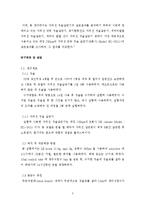
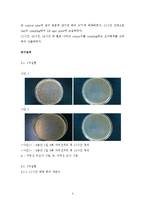

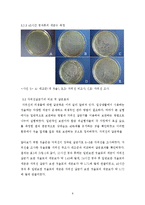
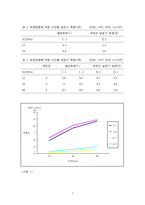
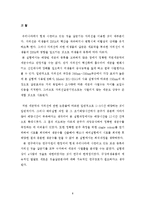
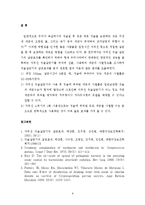
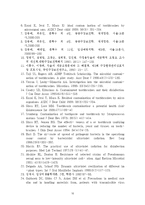
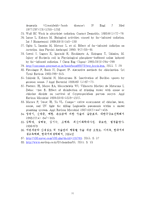

 분야
분야


